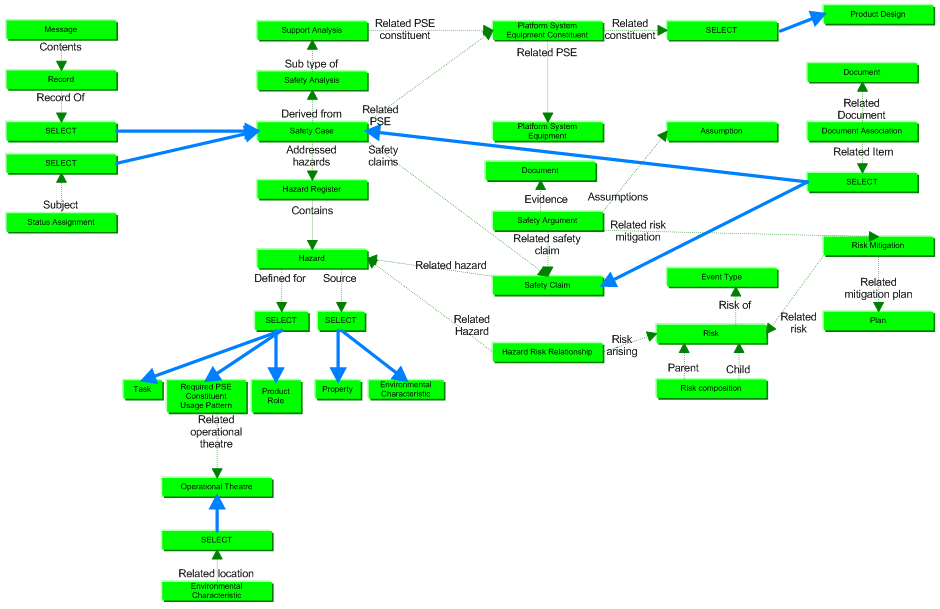
| Business DEX (UK_Defence055):— safety_case | Date: 2010/03/14 11:23:57 Revision: 1.10 |
The information requirements table for the Safety Case DEX is shown below:
|
Information requirement |
Business Object(s) |
|---|---|
| Identification of the PSE to which the safety case relates. | Safety Case, PSE |
| Reference to all proposed PSE modes of operation to which the safety case applies. | Safety Case, Hazard Register, Hazard, Required PSE Constituent Usage Pattern, Product Role, Task |
| Reference to context of the usages of PSE (that conform to the design) including the environment and/or theatre in which the safety case applies. | Safety Case, Hazard Register, Hazard, Environmental Characteristic, Operational Theatre |
| Definition of hazards in respect of the PSE in consideration, in specified modes of use and environment/theatre of operation. | Hazard |
| Definition of risks that may derive from the hazards identified | Risk, Hazard, Hazard Risk Relationship |
| Identification of the preventive and mitigating actions planned to reduce the incidence and/or the impact of risk to an acceptable level. | Risk, Risk Mitigation, Plan |
| One or more assertions on the assessed safety of the aspect of the PSE under consideration, each assertion being regarded as a ‘Safety Claim’. | Safety Claim, Hazard |
Definition of each Safety Claim made for the PSE. Each claim will relate to a different aspect of the PSE and may include
for example:
|
Safety Claim |
Definition of the type of argument that supports the safety claim. This may be:
|
Safety Argument, Safety Claim, Document, Document Association |
Reference to the evidence that supports the safety argument. This may be drawn from:
|
Safety Argument, Safety Argument Evidence, Safety Evidence |
| Recording of “release to service” approval of the PSE for which the safety case is defined. | Status Assignment, Safety Case, PSE |
Table 1 — Safety Case information requirements

© UK MOD 2010 — All rights reserved